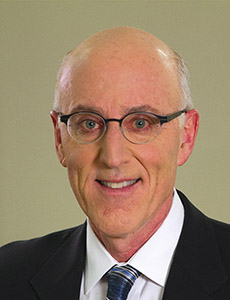Pharmacy Cost Control
Addressing the Physician Dispensing Challenge

Although many states have enacted regulations to curb physician dispensing, doctors are finding ways to get around restrictions — driving up costs for workers’ compensation systems.
That’s a key conclusion of the recent report, “A Multistate Perspective on Physician Dispensing, 2011—2014,” by Cambridge, Mass.-based Workers Compensation Research Institute.
WCRI analyzed the prevalence and costs of physician dispensing across 26 state workers’ comp systems, comparing post-reform states with the states where no reforms were made, or where there were reforms but the data reflect pre-reform experiences.
The study found that, in post-reform states, the average price per pill for existing drugs decreased after reforms. However, physicians are bypassing the reimbursement rules that specifically target repackaged drugs by dispensing newer, higher-priced drugs.
That has offset the cost savings of reforms, actually driving up the average price per physician-dispensed pill in some states — particularly in California, Florida, and Illinois.
Prior to reforms, physicians often sold repackaged drugs, the average wholesale prices of which are typically higher than the original drug as packaged by the manufacturer.
Repackaged drugs are not addressed in pharmacy fee schedules — which are based on average wholesale prices of the drugs dispensed. So physicians who dispense repackaged drugs are paid higher prices than those who dispense the drug as originally packaged.
Reforms capped the maximum reimbursement amount for repackaged drugs to the average wholesale price of the original.
“Facing a substantial price reduction, some physician dispensers might have tried to find a way to maintain the income they had from dispensing repackaged drugs prior to the reforms,” said Dongchun Wang, an economist at WCRI and author of the report.
“Those higher-priced new strength drug products provided a means for them to do so.”
WCRI said while some physicians dispensing the new strengths may have been motivated by the desire to provide benefits for their patients, “we are not aware of any scientific studies that support this,” said Wang.
“Our data show that the higher-priced new strengths were chosen by physicians who dispense drugs, not by those who write prescriptions and send their patients to a retail pharmacy. We rarely see these new strength products in pharmacy-dispensed prescriptions.”
The report cites evidence that other physician dispensing reforms in Florida, Indiana, Kentucky, and Tennessee might have some impact on these concerns.
“These more recent reforms either limit physicians’ ability to dispense certain drugs or limit the timeframe over which physicians are allowed to be reimbursed for drugs they dispense,” Wang said. “This may be one area to look into to gain additional insights.”
Dr. Robert L. Goldberg, chief medical officer for Tampa-based Healthesystems, said there is still a very limited role for physician dispensing as it serves patient convenience and access to medications during an initial visit for an injury.
“Employers enjoy the benefits of patients being able to come back to work after that visit instead of having to wait an hour or two at the pharmacy,” Goldberg said.
“Unfortunately, for many physicians, dispensing has become a revenue enhancer. That’s a problem as it’s become a big cost to the workers’ comp system — to employers and payers — because there’s a whole industry growing around physician dispensing to take advantage of the opportunity.”
Safety at Risk
There are other issues in addition to the cost — first and foremost, patient safety, Goldberg said. Early on, the treating physician may not necessarily have the full medical history of patients, and the patient doesn’t always know the name of the other medications he or she may also be taking.
“Drug interactions are common and are often unrecognized, but when patients go to the same pharmacist, that pharmacist should have their medication history and is responsible for checking to see whether there may be any potential drug interactions,” Goldberg said.
“And even if a physician has access to a patient’s full medical history, unfortunately some are not always up-to-date on drug interactions — but most pharmacists are.”
There’s also the issue of utilization of medication when it goes out the door of the physician’s office or clinic — “in essence, no one is keeping an eye on the dosage, the quantity and the duration,” he said.
“They could also be taking an off-the-shelf topical and making it higher strength and turning it into a faux prescription — changing the cost from $7.50 a tube to $750 a tube.” — Dr. Robert L. Goldberg, chief medical officer, Healthesystems
However, if the prescription is being processed by a PBM that is serving the interests of the payer and employer, that PBM will develop transaction and medication histories, as well as be familiar with state and payer formularies, Goldberg said.
Those formularies may have edits, step therapy, and certain quantity, duration and dosage limits — which can answer the question of whether a patient needs to go out the door with 30 or 60 days’ worth of medication, or whether it should be five or seven days’ worth or none at all.
“These checks on dosage, quantity, duration and drug interactions are important, particularly in a workers’ comp environment where there are no copays and deductibles for patients,” he said.
“If they are injured or ill and just handed bottles of medication, they are going to take it no matter what the doctor is giving them.”
Numerous Loopholes
Data published by Healthesystems shows that when physicians are dispensing medications, claim costs, medical costs and indemnity costs go up, Goldberg said.
“Physicians who dispense often are prolonging the use of the medical model by continuing to have patients take the medications longer than they might really need to for their injury — and if opioids are given, it really increases the total costs,” he said.
Doctors are finding a number of ways get around the physician dispensing reforms, Goldberg said. First, there’s “new, not novel” medications. An example would be a medication that’s typically in a 5 mg or 10 mg pill, approved by the FDA and authorized for treatment. But then a manufacturer produces a 7.5 mg pill that is not recognized by any system, with no average wholesale price, and it can then be priced at “whatever.”
“The older pill might cost $1 a pill, but the new, not novel pill — with the same chemicals but different dosage — can be selling for $10 or $100 a pill,” he said. “There’s no way to actually stop that from happening unless it ends up on a formulary or state-approved fee schedule.”
Compounding is another way to get around the reforms, Goldberg said. Drugs are put in some concoction, and the impacts of the dosage form or combination can be unknown and outside of any cost-control mechanism.
The latest phenomenon is private-label topicals, he said. A drug that in and of itself is known to be useful or effective at a certain dosage strength may be perfectly safe, but then its manufacturer makes it a unique product by converting it into a topical that is not well known — and which costs more.
“They could also be taking an off-the-shelf topical and making it higher strength and turning it into a faux prescription — changing the cost from $7.50 a tube to $750 a tube,” Goldberg said.
Formulary adoption usually says what can and can’t be used, but depending on how specific those state formularies become, these items could potentially still get through, he said. Formularies now have to become even more specific, such as banning specific compounds and private-label topicals, and new definitions of “new, not novel.”
Formularies that say drugs at certain dosages such as 5 and 10 mg are acceptable, should also specifically exclude those drugs at 7.5 mg.
“California’s formulary is getting ready to be adopted. It has an approved, or exempt, list of medications, but even that does not address new, not novel drugs until the state includes the dosages,” Goldberg said.
“California’s formulary also states that compounds need to be pre-authorized — they can’t just go out the door and have people trying to catch up with them later.”
A number of states (those cited in WCRI’s report), are also now requiring doctors as well as workers’ comp systems to limit the quantities of all medications and limit the timeframe they can be given.
“California’s proposal for physician dispensing is limited to initial treatment, and only one fill for the first seven days of injury,” Goldberg said. “That alone would knock out most physician dispensing or unsafe dispensing, and reduce a lot of the problems.”
Brigette Nelson, senior vice president, Workers’ Compensation Clinical Management at Express Scripts in Scottsdale, Az., said that physician dispensing continues to be a problem in workers’ comp.
“The costs of medications are significantly higher, but the other thing to be concerned about is that physicians doing this often don’t have the full prescribing history from other physicians, so drug interaction screening and safety screening is missed,” Nelson said.
Regulations are “all over the board” in post-reform states, ranging from prohibiting dispensing of certain types of medications, limiting quantities, or establishing fee schedule caps, she said.
The battle against problems stemming from continued dispensing by physicians should really be about continuing to “put more teeth” in regulations.
“From our perspective at Express Scripts, even in states where there are fee schedule caps, we can still see issues,” Nelson said.
“The quickest way is to prohibit it. But if it’s not prohibited, states should try to encourage injured workers to use a retail pharmacy which can perform the appropriate patient safety screening.”
As part of its physician dispensing solution, Express Scripts sends a letter to patients, providing them with information on the potential safety issues, and letting them know how expensive physician dispensing can be and “to do their part to keep costs down.”
“Perhaps more important, when we get a claim with physician-dispensed medications, we bounce it up against the plan design with formulary edits that had to come through a retail pharmacist — the same ones that would have been in place at the retail pharmacy,” she said.
“We look at safety issues, and we make a determination to cut the fee schedule or not pay if the state says the practice is prohibited.”
Using its physician dispensing solution, Express Scripts can bring the physician-dispensed medication back into the retail or mail order network.
“We give the payer the information they need, to not let this go through physician dispensing the next time there is a prescription,” Nelson said.












